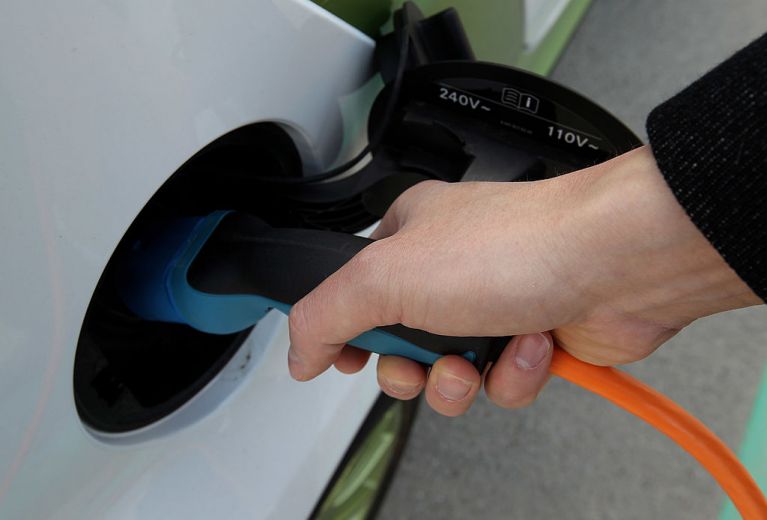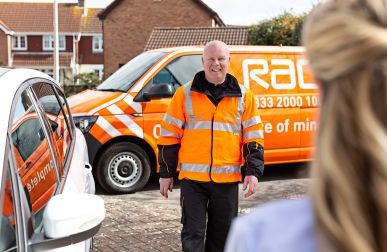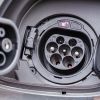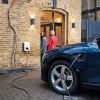We look at some of the best, all of which mix practicality and style with potentially low running costs.
Small electric SUVs
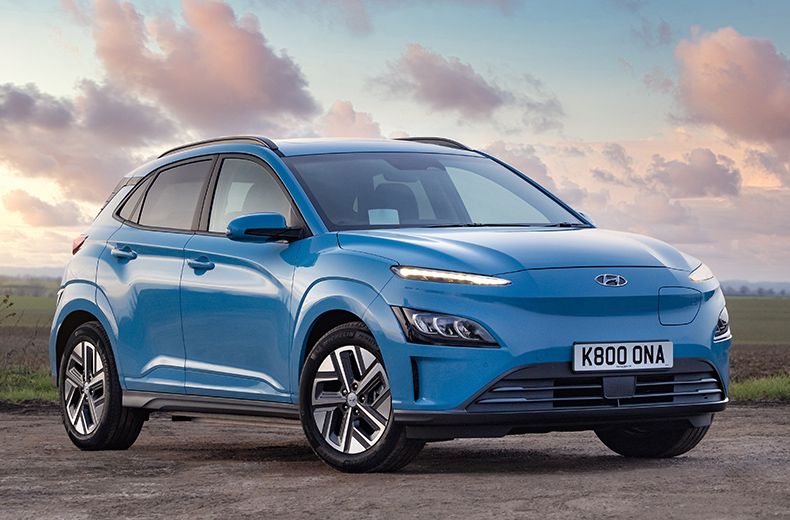
Hyundai Kona Electric
The electric version of the Hyundai Kona was one of the first ‘long-range’ SUVs and has recently been updated to keep it among the class best.
Where the Kona Electric differs from other small electric SUVs is by offering a choice of two battery sizes. The 39.2kWh version has a range of up to 190 miles, while the 64kWh model can travel up to 300 miles on a single charge.
Practical features on some Konas include wireless smartphone charging and adaptive cruise control. All versions have a useful 332 litres of luggage space with the rear seats up.
Adjustable regenerative braking – where deceleration energy tops up the battery – and rapid charging ability make the Kona Electric an efficient proposition.
Read our Hyundai Kona Electric review.
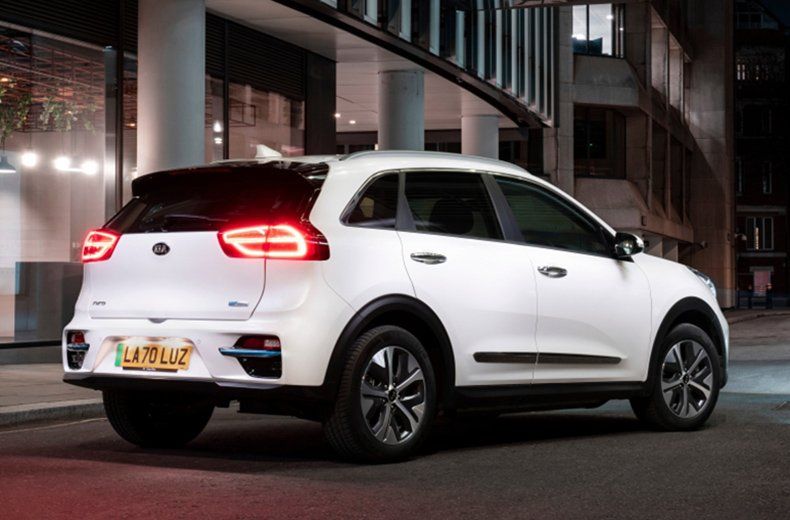
Kia e-Niro
The Kia Niro family of SUVs is very comprehensive, with hybrid, plug-in hybrid and all-electric versions.
The electric e-Niro shares the same batteries and 136PS or 204PS motors as the Hyundai Kona Electric. The official range for the 39.2kWh battery model is around 180 miles. The 64kWh version can drive up to 282 miles on one charge.
As the battery is under the floor, the e-Niro can hold a whopping 451 litres of luggage, making it one of the more practical small electric SUVs. There’s plenty of space inside, too.
Technology highlights include smart regenerative braking, which offers four levels of battery recharging on the move.
Read our Kia e-Niro review.
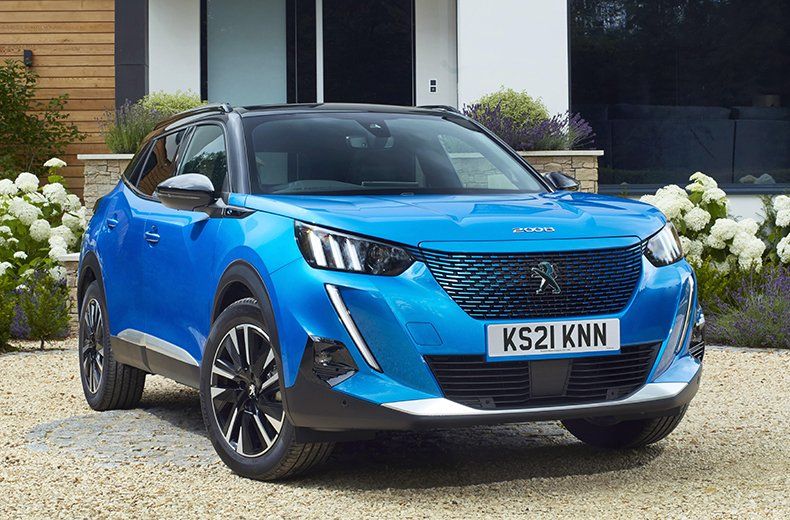
Peugeot e-2008
The Peugeot e-2008 shares its 50kWh battery and 100kW (136PS) electric motor with the closely related e-208 supermini, and has an official range of 206 miles.
Sharp styling on the outside is matched on the inside by Peugeot’s 3D ‘i-Cockpit’ instrument panel and digital displays. They give the e-2008 a very high-tech feel.
With the seats up, there is 434 litres of luggage space, plus a helpful 32 litres of oddment space around the cabin.
Fast 100kW charging capability allows Peugeot’s electric SUV to be charged to 80 percent in just 30 minutes, so there’s little to worry about when tackling a longer journey.
Read our Peugeot e-2008 review.

Vauxhall Mokka-e
Relaunched as a very stylish compact SUV, the second-generation Vauxhall Mokka is as fashionable as its predecessor was frumpy.
Its sleek body conceals an equally smart interior, including Vauxhall’s new ‘Pure Panel’ digital instruments and dashboard.
You’ll discover 350 litres of luggage space with the back seats in place. Fold them down and this expands to 1,105 litres – plenty for a family getaway.
Sharing the same battery and motor as the Peugeot e-2008, the Mokka-e can travel 209 miles on a single charge.
Read our Vauxhall Mokka-e review.
- The best electric cars 2021
- Electric cars – a definitive guide and tips for buyers
- Cheapest electric cars – top 12 used and new EVs
RAC Breakdown Cover
Join the RAC and get breakdown cover. Our patrols fix 4 out of 5 vehicles on the spot, with repairs done in just 30 minutes on average.
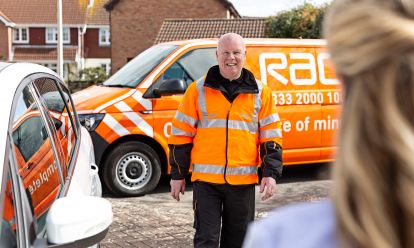

Family electric SUVs

Ford Mustang Mach-E
If you discount the very rare Focus Electric, the Mustang Mach-E is Ford’s first mass-produced all-electric vehicle. It will be the first of many.
Choosing to name its first electric SUV after its iconic muscle car brand is a risky move, especially as it’s a car aimed at families. But so far, it has paid off.
The Mustang Mach-E is an SUV with sporty styling. It mixes the sloping rear of Ford’s sports coupe with the upright stance and practicality of an SUV. Inside, there’s a 15.5-inch touchscreen like a Tesla, plus 402 litres of boot space.
Rear-wheel-drive versions offer up to 379 miles of range, and all-wheel-drive models can travel a maximum of 335 miles. You can choose between 68kWh and 98kWh batteries, and there’s even a 487PS GT version.
Read our Ford Mustang Mach-E review.
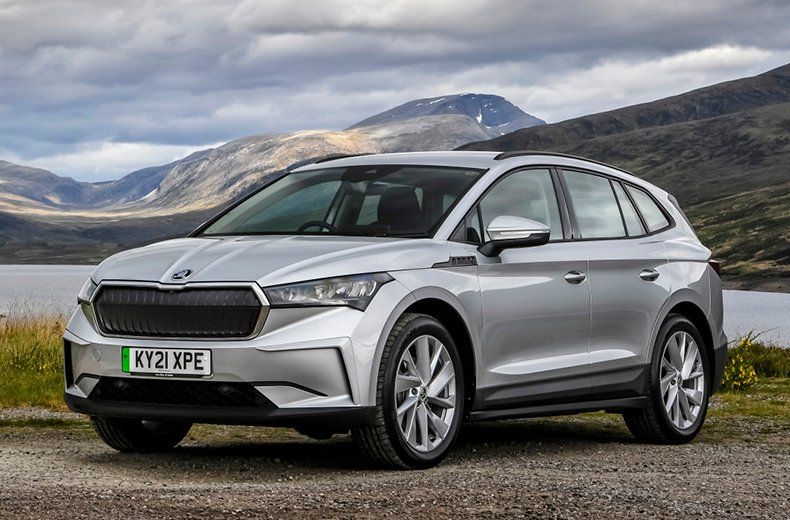
Skoda Enyaq iV
Following on from the success of its other SUVs – Kamiq, Karoq and Kodiaq – Skoda has launched its first electric SUV: the Enyaq iV.
Using similar electric technology to the Volkswagen ID.4, the Enyaq has 57kWh or 77kWh batteries. Some versions can travel up to 331 miles on a single charge.
The boot is bigger than an ID.4’s at 585 litres, while a choice of five interior design packages and styles gives the electric Skoda a premium feel.
When it comes to EV charging, the Enyaq’s battery can be refilled at speeds up to 125kW, meaning an 80 percent top-up is completed in 35 minutes.
Read our Skoda Enyaq iV review.
- Types of electric vehicles – EVs explained
- Electric vehicle range – how far can I drive in an EV?
- Make EV charging easier with the RAC home charge point installation service
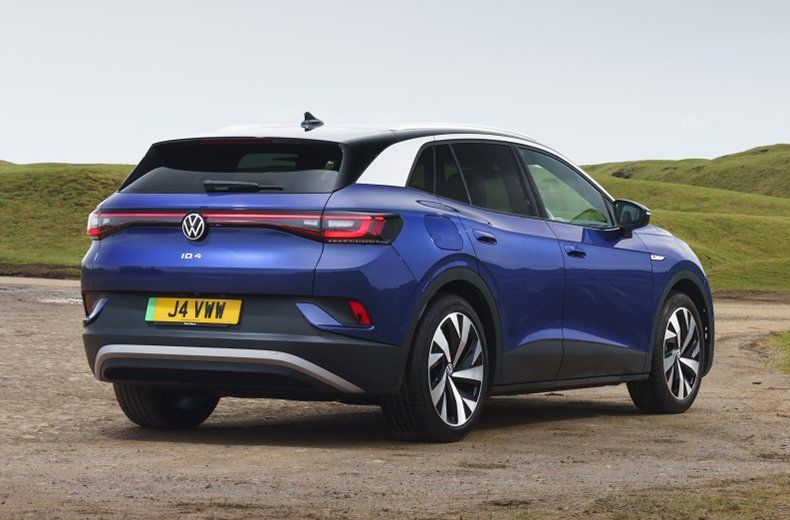
Volkswagen ID.4
The ID.4 is Volkswagen’s second brand new all-electric model following the ID.3 hatchback. It joins that car in kickstarting an all-electric rebirth for the company.
Packing digital technology and a high level of equipment into its minimalist interior, the ID.4’s boot can hold up to 543 litres of luggage.
Drivers can choose between four trims, two batteries – 52kWh and 77kWh – and three motors in the core ID.4 range, delivering 148PS, 170PS or 204PS, plus a range maximum of 320 miles on some versions.
There’s even an ID.4 for fans of Volkswagen performance cars. The GTX is an electric SUV ‘GTI’ with 299PS and dual-motor all-wheel drive. It might be the affordable performance family car of the future.
Read our Volkswagen ID.4 review.
Premium electric SUVs

Audi Q4 e-tron
The Q4 e-tron is Audi’s premier electric SUV, joining the larger e-tron and e-tron S models in the German manufacturer’s zero-emissions SUV family.
The SUV has a choice of 55kWh or 82kWh batteries, rear or quattro all-wheel drive, and 125kW (170PS), 150kW (204PS) or 220kW (300PS) motors.
That means there should be a Q4 e-tron for everyone, and that’s before we mention that a sleeker, coupe-like Sportback version is also available.
Inside, a digital dashboard gives the Q4 e-tron a high-class feel, and 520 litres of boot space mean the electric SUV can also cope with big loads.
Read our Audi Q4 e-tron review.
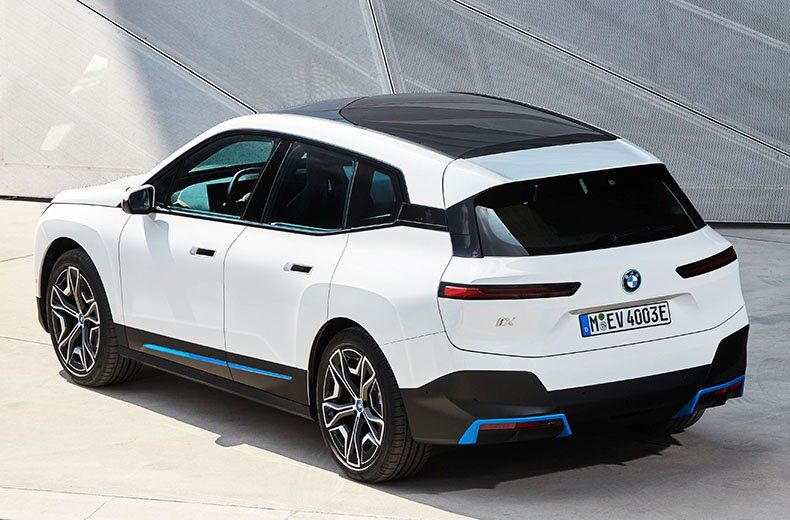
BMW iX
Currently the most expensive BMW electric SUV, the iX looks like nothing else on the road. Whether you think that’s a good or bad thing is your call, but the bold styling means you’ll certainly stand out if you drive one.
The opulent and daringly styled interior is as bold as the outside, and with between 500 and 1,750 litres of luggage space, it is very accommodating.
Powered by a choice of two motor set-ups – 240kW (326PS) or 385kW (523PS) – a 76.6kWh battery gives an official range of up to 380 miles on the most powerful version.
This model can also charge up to 80 percent battery in as little as 35 minutes.
Read our BMW iX review.
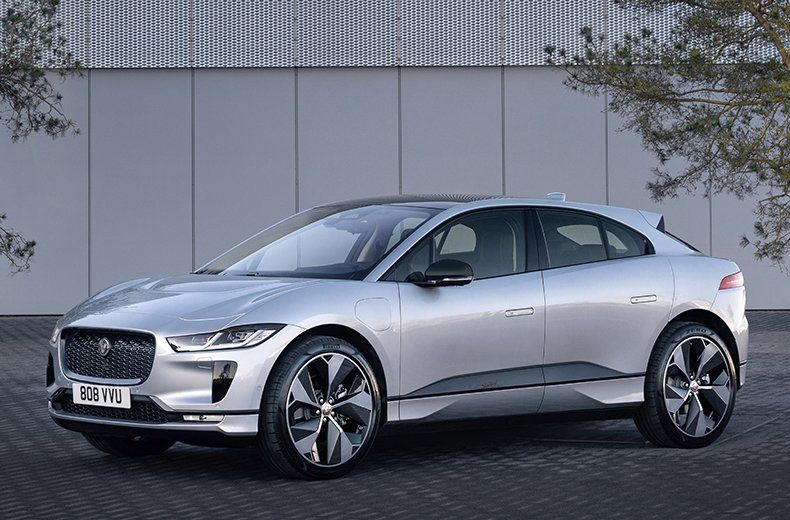
Jaguar I-PACE
The I-PACE is not only Jaguar’s first electric SUV, but also its first EV. Its sleek style differs from other SUVs, and the I-PACE has a sporty look.
Beneath the swoopy lines is a 90kWh battery and a pair of electric motors that develop 400PS, giving Jaguar’s electric SUV electrifying performance – 0-60mph takes just 4.5 seconds.
Official range is up to 292 miles, which should be enough for most weekly commutes, and the all-wheel-drive system means the electric Jaguar can handle the rougher stuff, too.
Inside, the dual touchscreen interior is as sleek as the outside. Boot space of 505 litres and a powered tailgate make the I-PACE convenient as well as comfortable.
Read our Jaguar I-PACE review.
- Electric car charging – how it works and how much it costs
- Electric car insurance – is it cheaper?
- 2030 ban – is it worth buying an electric car now?
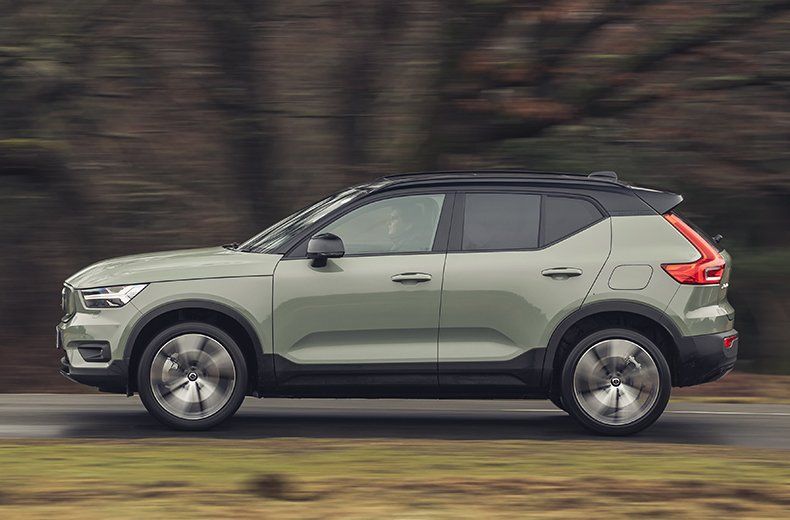
Volvo XC40 Recharge Pure Electric
Volvo’s transition to becoming an all-electric brand will see half of the cars it sells being fully electric by 2025.
Based on the popular XC40 compact SUV, the XC40 Recharge Pure Electric has a 78kWh battery – good for an official driving range of up to 259 miles.
The 408PS power output from its twin motors means Volvo’s electric SUV is no slouch, with 62mph coming up in 4.9 seconds. All-wheel drive also boosts the XC40’s off-road capability when needed.
With the back seats in place, there is 452 litres of luggage space, and the interior has all the comfort and features of the petrol and plug-in hybrid XC40s, including the slick, portrait-orientated touchscreen.
Read our Volvo XC40 Recharge Pure Electric review.
Conclusion
The RAC is leading the way when it comes to supporting drivers in the switch to electric vehicles.
A growing number of our patrol vans have built-in emergency mobile charging systems that can give an out-of-charge electric car enough power to be driven a short distance home or to a working charge point. Our All-Wheels-Up recovery system also allows our patrols to rescue electric cars safely with no need for a flatbed.
RAC Breakdown Cover
Join the RAC and get breakdown cover. Our patrols fix 4 out of 5 vehicles on the spot, with repairs done in just 30 minutes on average.



